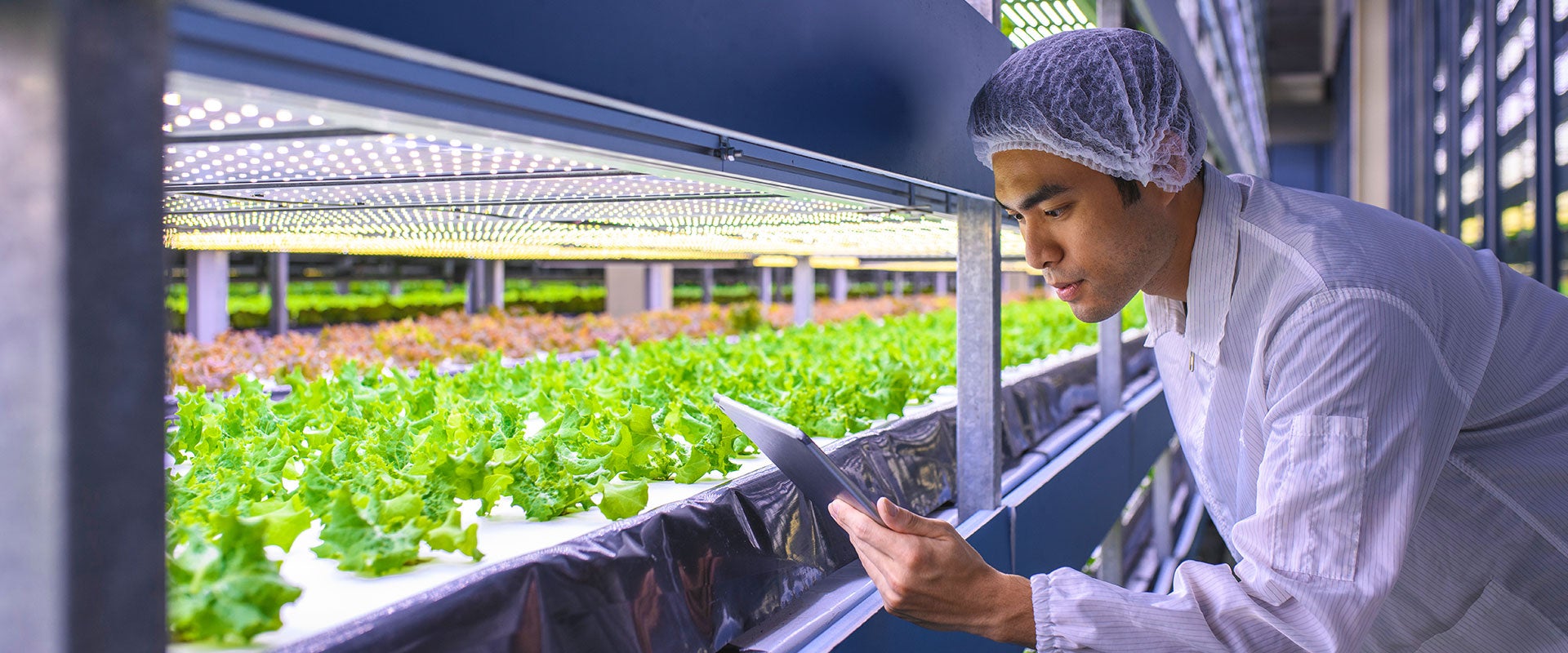As the impact of climate change becomes more pronounced and labor becomes increasingly scarce, the need for methods of growing produce more efficiently is becoming more urgent. At the same time, consumer and retailer demand for local, lower-cost produce is growing.
Together these broader macro trends are spurring demand for greenhouse and vertical farm- grown produce (leafy greens, tomatoes, peppers, cucumbers and, most recently, strawberries), all of which offer a raft of benefits to both camps, from consistency of quality and taste to supply chain resilience.
But while demand for controlled environment agriculture (CEA)-grown produce is on the rise, U.S. production — both per capita and overall — remains limited and well below that of other countries such as Canada, Spain, Israel and the Netherlands. So, how will the U.S. meet the rising demand for CEA-grown produce?
Investment in the near term is unlikely to come from retailers, who for the most part still aren’t committing capital to growing their own produce, whether indoors or outdoors.
Traditional open-field produce players are also unlikely to invest, given both the need for different capabilities and the significant investment requirements.
The result is a notable opportunity for outside investors, who are well aligned with the return profiles of this asset class and as such can act as a potential accelerator of CEA-grown crop adoption in the U.S.
The benefits of CEA
The majority of produce is still grown outdoors in open fields. But the benefits of controlled environment agriculture have come to be seen as especially attractive in recent years by consumers and retailers alike.
Benefits to consumers
Consistent appearance and taste. Controlled environment production returns the most consistent level of quality and nutrients, which leads to consistently better-tasting produce. The appearance and shape of the produce can be more tightly controlled as well.
Year-round supply. Because planting and harvesting of CEA produce is not dependent on weather and seasons, consumers can have access to high-quality CEA-grown produce year-round.
Locally and sustainably grown. Consumers are increasingly interested in locally grown/sourced produce due to the environmental and social benefits it yields, and CEA produce can be grown and sourced close to end markets. It also uses less water and land than open-field produce.
Chemical-free. Growing produce indoors in controlled environments eliminates the need for pesticides.
Food safety peace of mind. The controlled environments in which CEA produce is grown make it less prone to recalls, and — when they do occur — make that produce easier to trace.
Benefits to retailers
In addition to year-round supply, retailers benefit from the following:
Supply chain resiliency and consistency. CEA produce gives retailers a consistent supply chain, one that is not dependent on weather or other uncontrollable factors that come with traditional agriculture.
Lower costs and less shrinkage. Because CEA produce is sourced locally, shipping costs are lower for retailers. And because that produce arrives more quickly and its quality is more consistent than that of traditionally grown produce, retailers’ shrinkage is lower.
Consistent quality and heightened safety. Retailers can reliably provide their consumers with high-quality CEA produce, regardless of adverse weather or other uncontrollable factors. CEA produce is also shielded from exposure to animals and agricultural water that can lead to food safety issues, and any issues that do arise can be more easily traced than those associated with field-grown produce.
Consumer appeal and consumers’ willingness to pay. Retailers can sell CEA produce at prices that are twice as high as those of open-field produce, if not more. Some consumers will pay a premium for high-quality CEA produce.
Alignment with environmental, social and governance (ESG) criteria. As retailers increasingly seek to align with ESG principles, CEA produce provides them with multiple avenues, including:
- Local sourcing
- Lower water usage
- Reduced carbon footprint (cultivation, distribution, etc.)
Figure 1 shows the ESG benefits of greenhouse-grown lettuce (which is significantly more water, land and transport efficient) versus open-field-grown lettuce.








